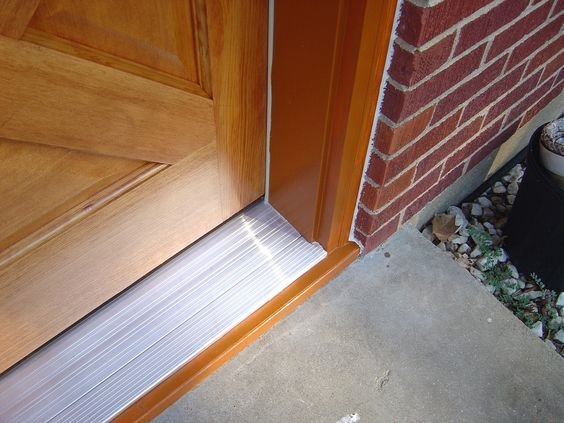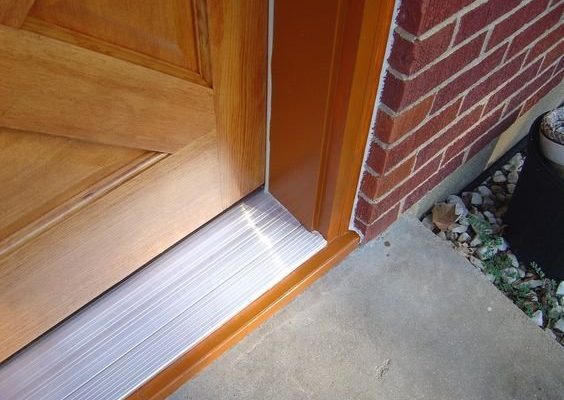
But here’s the thing: thresholds for outswing exterior doors aren’t one-size-fits-all. They need to put up a fight against harsh weather, work with different types of floors, and match your door exactly—otherwise, you’ll get leaks, cold spots, or even a stubborn door that’s tough to close. If you walk into a hardware store and see a row of options (aluminum, wood, composite, you name it), it’s easy to get overwhelmed. Let me explain what really matters, and why brands like Pemko, Endura, and Schlage keep cropping up when people talk about the best threshold solutions for outswing doors.
What Makes Outswing Door Thresholds Unique?
You might be wondering why a threshold for an outswing door needs special attention. After all, it’s just a strip at the bottom, right? Not quite. With outswing doors, the door sweeps outward—meaning the threshold is exposed directly to the weather, not sheltered by the door like an inswing version. This changes the whole game.
A good threshold for an outswing door needs to do double duty: it has to seal tightly underneath, but also allow the door to pivot and clear it without scraping or sticking. Unlike traditional inside-swing doors where the weather hits the outside edge, the outswing threshold becomes the first line of defense. That means it needs top-notch water sealing, smart design to prevent code violations (like tripping hazards), and rugged materials that won’t rot or wear out fast.
Some brands, like Pemko, focus on adjustable aluminum thresholds, while others like Endura offer composite and even fully automatic sealing options. It’s all about how those features sync with your local weather, traffic, and door style.
Popular Materials For Outswing Door Thresholds
When you’re picking a threshold, the material isn’t just about looks. It affects everything from durability to performance, and even installation. Here’s the rundown:
- Aluminum Thresholds: These are workhorses—tough, corrosion-resistant, and common for heavy-duty use. Most aluminum thresholds include a vinyl or rubber insert for better sealing, so you don’t have to worry about cold air finding its way in. If you live somewhere rainy or snowy, aluminum’s ability to fend off rust is a real plus.
- Composite Thresholds: Composite blends plastic and wood fibers, so you get the strength of both without the risk of water damage. They’re usually maintenance-free—no painting or sealing needed—and last for years without warping. Brands like Endura have made a name for themselves with composite options designed just for outswing exterior doors.
- Wood Thresholds: These can look beautiful, especially in historic homes, but honestly? They need the most upkeep. Wood can rot, swell, or warp if it’s not carefully sealed and maintained. For high-traffic or wet areas, it’s best to pick wood only if you’re ready for the extra TLC.
The best threshold for your outswing exterior door usually combines materials—like aluminum with a composite core—so you get the best of all worlds.
Code Requirements And Sloped Design: What To Know
Have you ever tripped on a high threshold and cursed under your breath? That’s why modern building codes matter, especially for outswing doors. The International Residential Code (IRC) and the Americans with Disabilities Act (ADA) both set limits on threshold height—usually around 1/2 inch for accessibility. If you install something too tall or steep, you can end up with a code violation, or worse, a door that won’t swing freely.
Here’s where the sloped threshold comes in. Instead of one sharp edge, sloped thresholds gently angle down and often include a water return lip—sort of like a little gutter to send rainwater away from your door. This slope helps shed water fast and reduces tripping hazards. If you’ve got tile, concrete, or hardwood near the entry, the right slope lets you line everything up flush (just like a puzzle piece), so you don’t get an awkward bump.
Adjustable thresholds, like the ones Pemko offers, take it a step further. You can tweak their height to pair perfectly with your floor, meaning you don’t need to fuss with shims or worry about gaps over time. So, not only do you stay code-compliant—you also make your entry safer and easier to use.
Weather Sealing Technology: Gaskets, Sweeps, And More
Let’s talk about the details that keep your toes warm and your floor dry: weather seals. This is the unsung tech that turns a basic threshold into a high-performance barrier against the elements.
Most modern outswing thresholds use a combination of:
- Compression Gaskets: These rubbery seals squish tight when the door closes. Think of them like the soft edge on a car door—snug, quiet, and great for blocking drafts.
- Door Bottom Sweeps: These attach to the underside of the door and brush or wipe the threshold as you open and close. They’re your last line of defense against rain, bugs, and dust.
- Integrated Drip Edges: Some high-end thresholds include a built-in drip edge, which is a small outward lip that diverts water away from the entry. It’s a little thing, but it can make a big difference in keeping water outside.
A lot of people skip upgrading their weather seals or just stick with what came standard from the factory. Honestly, swapping in a premium seal or sweep can bring your door up to “like-new” performance in an afternoon. Pemko is known for their easy-install gasket kits, and Endura’s adjustable decks make it easy to get a tight, custom fit.
Common Problems With Outswing Door Thresholds
Here’s a quick reality check: even the best threshold for outswing exterior doors can run into trouble. Knowing the usual suspects helps you troubleshoot before you run into bigger headaches.
- Leaks and Drafts: The most common complaint is water or cold air getting in under the door. Sometimes the threshold sits too low, or the seal gets worn or cracked. If you feel a breeze, check the threshold’s gasket—the fix might be as simple as resetting or replacing it.
- Threshold Wear: All that foot traffic can grind down even tough materials over time. If you see deep scratches or the finish is peeling, it’s probably time to swap out the threshold or add a protective cap.
- Door Dragging or Not Latching: Outswing doors are heavy, and settling or temperature changes can throw off the perfect alignment. Adjustable thresholds let you re-sync the door with just a screwdriver—no need to call in a pro.
Think of your threshold like the tires on a car: check it every now and then, give it a quick tune-up when needed, and it’ll last for years.
Best Brands And Standout Threshold Options
With dozens of brands out there, it’s easy to get lost in the choices. Here are a few rock-solid names that always come up when talking about the best threshold options for outswing exterior doors:
- Pemko: They make heavy-duty aluminum and adjustable thresholds that are a favorite for both homes and commercial spaces. Their products get high marks for easy installation and long-lasting performance.
- Endura: Endura specializes in composite and hybrid thresholds, many with built-in drip edges and extra-strong weather seals. Their Z-Articulating Cap Sill is a customer favorite since it can self-adjust as your door and house settle.
- Schlage: Most people know Schlage for locks, but their entry door hardware (including thresholds and sweeps) is tough, reliable, and widely available. It’s a strong choice if you want a simple, universal fit.
If you’re after something specific—like a low-profile, ADA-compliant option, or a threshold that can pair with smart home locks—these brands usually have you covered. Just remember to check your door’s width, swing direction, and the height of your flooring before you buy.
DIY Installation Tips For Outswing Thresholds
Upgrading or replacing a threshold on an outswing door might sound tricky, but it’s often a doable weekend project with the right tools. Here’s how the process usually goes:
- Remove the Old Threshold: Unscrew and lift out the old threshold. If it’s caulked in place, use a utility knife to cut the sealant first—this helps prevent damage to the frame or floor.
- Clean and Prep the Area: Vacuum or sweep away dirt and debris. Check for rot or mold and fix any problems before installing the new piece.
- Dry-Fit the New Threshold: Place the new threshold in position without fastening. Make sure it fits snugly and the door swings over it smoothly.
- Apply Sealing Caulk: Run a bead of exterior-grade caulk under the threshold to keep water out. Press it firmly into place, then fasten with screws.
- Check The Seal: Close the door and make sure the gasket compresses just enough to stop drafts, but not so much that the door sticks.
If your new threshold is adjustable, you can dial in the perfect height over time, so you don’t have to worry about settling or flooring changes down the road.
Choosing The Right Threshold For Your Door
Picking the best threshold for your outswing exterior door is a mix of measuring, matching, and thinking ahead a little. Here’s what to focus on:
- Door Width and Swing: Measure your door before you buy—you don’t want to get home and realize the threshold’s too short or the wrong profile for an outswing.
- Weather Conditions: If you live somewhere wet or cold, pick a threshold with strong water sealing and a solid composite or aluminum build. If you’re after maximum energy efficiency, look for double or triple seals.
- Style and Finish: Modern thresholds come in different colors and trims. Match your home’s look for bonus curb appeal, or pick a finish that hides dirt and scuffs.
- Compatibility With Hardware: If you’ve got a smart lock or extra security features, double-check that the threshold won’t get in the way of wiring or mounting plates.
Sometimes, it’s worth investing a bit more upfront for a quality, adjustable threshold. It’ll outlast cheap versions, work with your existing hardware, and save you hassles from leaks or drafts in the long run.
The best threshold is the one you barely notice—quiet, strong, and always working in the background to keep your home comfortable and secure.
Wrapping Up: Put The Right Finish On Your Outgoing Entry
Finding the best threshold for outswing exterior doors comes down to knowing your door, your climate, and your personal patience for maintenance. Whether you go for a bare-bones aluminum strip or a premium adjustable composite model, what really matters is a tight seal and a flush, smooth fit. Brands like Pemko and Endura have made the process easier than ever, giving you the freedom to choose durable materials without sacrificing style or comfort.
The right threshold does more than just cover a gap—it keeps the elements where they belong, supports smart tech upgrades, and helps your door swing open with ease, season after season. If you’re looking for more comfort, fewer drafts, and a longer-lasting entryway, swapping or upgrading your threshold is a smart move that pays off every time you step through the door.
